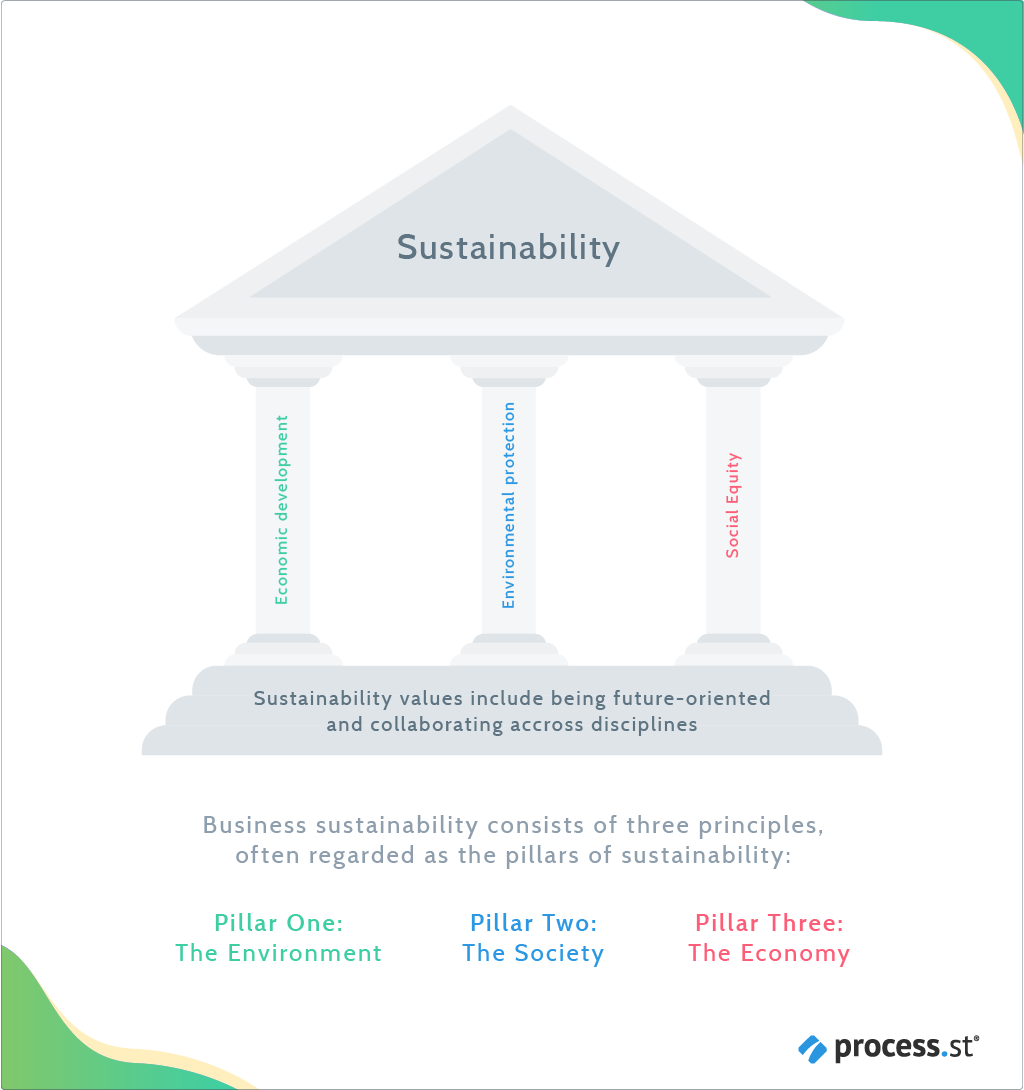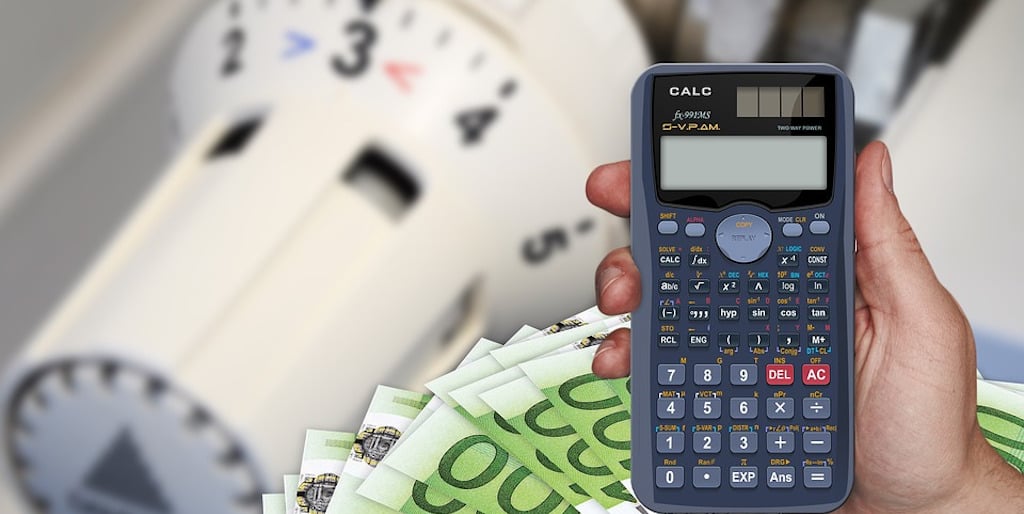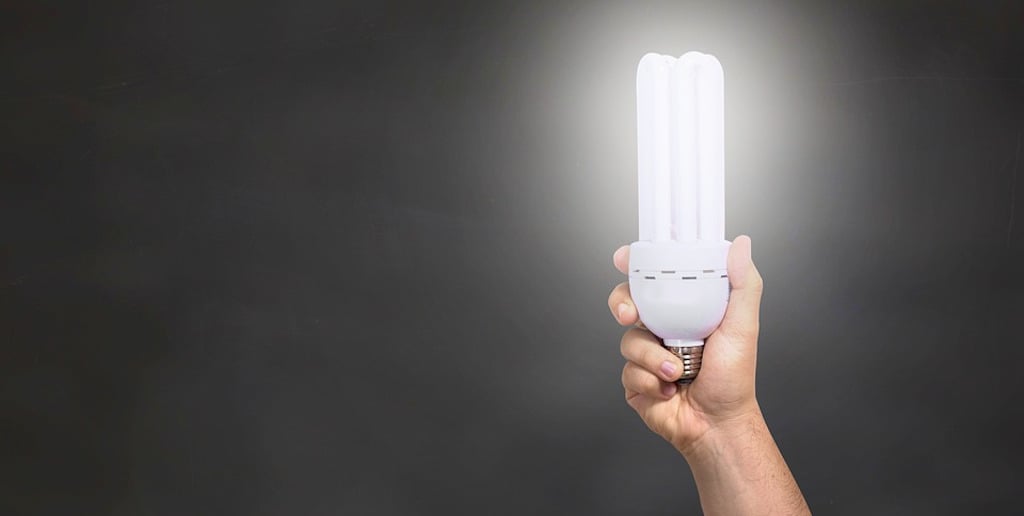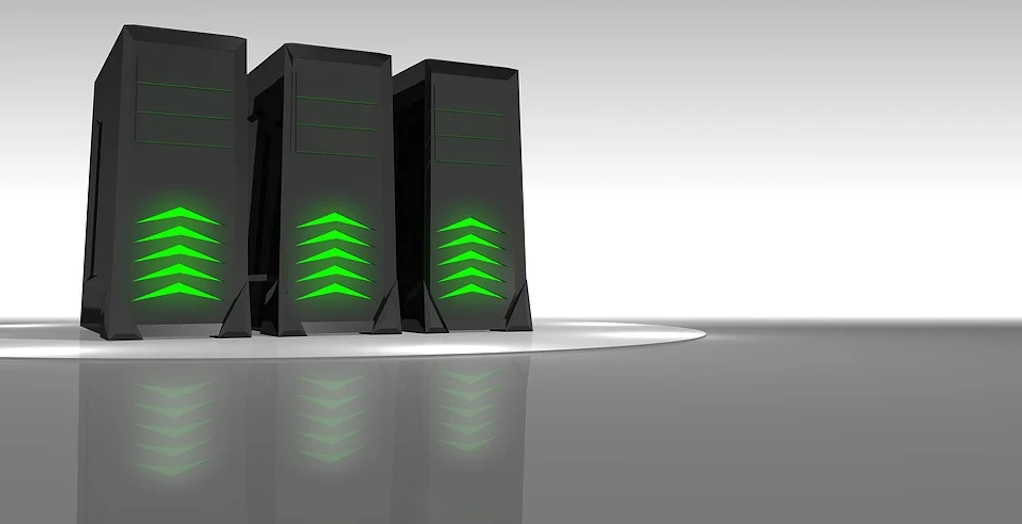
In 2018 the green technology market was valued at $6.85 billion.
This figure is projected to increase to $44.61 billion, with a Compound Annual Growth Rate (CAGR) of 26%.
This change comes as a response to our present-day environmental crisis. In this sense, green technology provides a knife for our noose, to help us move forward, past plastic pollution, poisonous chemicals, and climate degradation.
“The concept of ecological modernism, which sees technology as key to solving big environmental problems, is getting a lot of buzz these days.” – The Guardian, Technology as Our Planet’s Last Best Hope
Like The Guardian, at Process Street we also believe technology plays a vital role in helping society move forward, to work with the environment and our planet… rather than against it.
In this article, you will learn what green technology is, why it is important, and 6 easily applicable ways you can utilize green technology in your business or line of work today.
In addition, Process Street as a green tech solution gives you free access to our leading business sustainability templates. Sign up to Process Street here for free and check out our ISO 14001 Environmental Management Self Audit Checklist below for a taster.
Click here for free access to our ISO 14001 Environmental Management Self Audit Checklist!.
Click on the relevant subheaders or scroll down to find out how to be both lean and green in business.
- What is green technology?
- Green technology as a positive and proactive approach for solving our environmental crisis
- Green technology examples: 6 top examples of green tech for your business
- Using Process Street to become more sustainable
Right tech-perts, let’s get started!
What is green technology?
Green technology uses scientific innovation to create products and services that are environmentally friendly, helping protect the environment and in some cases, even repair it.
“Green technology is one that generates or facilitates a reduction in environmental externalities relative to the incumbent” – Mercure and Knobloch, The behavioural aspect of green technology investments: A general positive model in the context of heterogeneous agents
If pulled off, sheets of solar absorbing cells will soon cover large swaths of the Great Desert of Thar in Rajasthan India.
These plans come with India’s mission to obtain 2/3’s of its energy from renewable sources. Adopting green technology solutions in the form of solar power cells, India plans to cover this relatively underutilized land to generate 455 GW of renewable electricity. To put that latter figure into perspective, India’s current installed generating capacity is around 232 GW.
This is an example of green technology being harnessed on a mass scale, to capture energy from the sun and power society. In a way, you can think of solar energy as human-style photosynthesis.
The positive power of tech and green thinking is evident across the globe, with green tech use increasing. For instance, global investment into renewable energy has grown over the years, increasing five-fold from 2004-2010, and steady increases have been shown since. A 2018 Bloomberg New Energy Finance report indicated that clean energy investments totaled over $322 billion in that year.
There seems to be a mass exodus, with businesses moving away from non-renewable energy sources and environmentally damaging practices.
But when did this movement towards green technology begin?
I want you to pause for a minute to think about the term technology.
What springs to your mind?
If you’re anything like me, when I think of tech I imagine light-sabers, drones, and spacecrafts entering hyperspace – Star Wars geek alert .
But tech, and in this sense, green tech, doesn’t have to be in a futuristic vision depicted by some Sci-fi feature. There is evidence of green tech deployment as early as 2000 BC!
The Egyptians – although origins are subject to dispute – came up with a pharaoh-nomenon of passive air-conditioned buildings named windcatchers. These towers brought cool air-in and allowed hot-air to escape. Comparing these ancient wind-catchers to modern-day air conditioning, you can see how the former can be considered as green regarding energy usage and carbon footprint.

Moving through the history of green tech, we next find ourselves in 1839 where Edmond Becquerel discovered how to produce energy from exposing 2 substances to light. This discovery marks the origin of modern-day solar cells, which as we saw above, are heavily adopted in a societal effort to move towards sustainability, generating renewable energy from the sun.
Green technology as a positive and proactive approach for solving our environmental crisis
Our Earth is sweltering…
With droughts spreading, wildfires burning, heatwaves scorching, deserts expanding and our glaciers melting.Storms everywhere are more intense…
…deadly,
with natural disasters multiplying, does doing nothing make sense?And our seas, deep blue oases of life…
…are poisoned with plastic, polluted, acidified, creatures bleached, and extinction rife.But this isn’t just about altruism and saving our planet…
…sustainability is about humanity, and saving society as we like it
As scientists warn, we are in an environmental crisis.
We are the culprits of the present-day 6th mass extinction event, the disrupters of our natural climatic cycles, and the polluters of our surroundings.
Luckily we have top scientists, researchers, and techy-savvy wizards, all working their magic in a coordinated effort to help pull us out of our mess. Green technology is one means by which this is being done. By implementing green tech in your business or line of work, we can add you to the list of do-gooders and proactive pioneers helping to sustain our natural ecosystems.
Sustainable technology and why sustainability is important in business

The development and adoption of green technology is a major cog in our movement towards a more sustainable future. A future where our economy and human activity lies in fine-tune with nature, society being considered a part of nature and not separated from it. In this sense, green technology is sustainable technology – the 2 terms can be used interchangeably.
So why is sustainability so important?
Sustainability is not just about saving the trees for a clear conscience. Nature and its delicate intricacies maintain conditions on our planet suited for society to thrive. Being unsustainable threatens the very fabric of our being and the health, wellbeing, happiness, and survival of future generations.
But let’s take a purely economic stance, and ask, how does sustainability connect with our economy?
By asking this question, we are in essence considering how green/sustainable technologies bring economic benefits.
Looking at the larger scale, natural resources, and ecosystem services are part of the real wealth of nations. They are natural capital from which real capital is formed, contributing towards fiscal revenue, income, and the reduction of poverty.
Nature powers our economy by providing services and products such as food, medicine, raw materials, clean water, air, and land protection. As such, a 2018 report designated the financial worth of nature to be $125 trillion a year. This lays the foundation from which businesses across the globe compete to gain their slice of the $125 trillion pie.
Our economy is dependent on nature. Businesses are dependent on the functioning of our global economy. From the COVID-19 pandemic, we witnessed the fragility of our economic system and businesses to nature’s raw power. Practicing sustainability, and implementing green technology gives us a knife for our noose.
Moving away from this big-picture perspective, let’s take a look at the advantages green/sustainable technology can give a business.
The benefits of green technology for business
- Reduces energy costs: Small changes such as using LED lighting can save an organization money. Eco-friendly technology is focussed on efficiency, to reduce energy usage. It’s a win-win situation.
- Reduces water use: Aerated faucets, efficient toilets, and outdoor timing systems can greatly reduce the water bill. Some businesses have reduced water use by up to a half via implementing green water-saving technology such as sensor-taps.
- Reduces general office expenses: Moving to a digital platform can reduce spending on pens, paper, paperclips, markers, notepads, filing systems, and storage areas. Be sure to look at using a green web host for the digitization of your business, which is discussed in more detail below.
- Improves workplace productivity: Being green is often adopted as an organic approach to support the health, wellness, and productivity of employees.
- Creates wealth: Being green is a catalyst for innovation, new market opportunities, and the creation of wealth. In addition, moving to a green platform saves money across the board.
- Improves disaster recovery: For instance, digital copies of important documents, payroll, customer information are saved in the cloud and therefore easily accessed from anywhere after a catastrophe. Most green technology is about being self-sufficient and therefore less dependable on human-made infrastructure.
- Attracts more customers: A 2018 Global Index Survey revealed that the majority of consumers prefer green alternatives, and will pay more to support sustainable initiatives. Being green can therefore boost sales and leads.
- Gives tax benefits: Depending on the technology implemented, there could be tax benefits for green devices. For instance, using solar panels can give tax breaks worth more than 30% of the total installation costs.
- Engages social responsibility: Using green tech to go green sets an example for a societal paradigm shift towards sustainability.
- Helps when bidding for contracts: Being more sustainable via green tech helps when bidding for contracts from governmental or corporate bodies who work with sustainability.
- Improves brand image: With examples of corporations being slated for poor environmental performance, being more sustainable and employing green tech does the complete opposite, boosting an organization’s reputation into a positive light.
Green technology examples: 6 top examples of green tech for your business
As a content writer for Process Street, I witness the use of technology for greener business solutions in my everyday working life.
As a remote company, Process Street has digitized all business operations. The entire company works remotely. For me, this means a significant decrease in my demands on the environment usually associated with working in an office-based setting. For example:
- Removing the need for work clothes: With no office to go to, jogging bottoms are my go-to workday outfit. The Environmental Agency reported 15.1 million tons of textile waste, with the average American throwing away 32Kg of clothing and other textiles each year. On top of this, it takes 2,700 liters of water to produce a single t-shirt. You can see how reducing the need for clothing benefits our planet.
- Reducing the amount of clothes to wash: By wearing less, I wash less. Washing machine use has been tied to the pollution of our water systems, using excessive amounts of freshwater and energy wastage.
- Reducing my need to travel: Working from home means I do not commute to work. Looking at the total U.S greenhouse gas emissions by economic sector, transportation takes the lead spot, accounting for 29%. Breaking down these transportation emissions, 41% are accounted for by passenger car travel, 2% is associated with rail travel, and 1% is associated with motorcycle and bus travel. These are emission sectors targeted for reduction when cutting down the daily work commute.
- Increasing efficiency: To be fully digitized Process Street has documented processes stored in the cloud. For any task, such as editing content, to sending an invoice, all I have to do is open up a Process Street checklist and follow the process. This makes me more efficient in my work, and therefore I spend less time on the computer and using the internet.
From personal experience, I have realized the vital role of technology to make society greener. From my account, you can see how Process Street can be considered as a green technology, using on-cloud solutions to digitize business operations.
In the next section of this article, we will consider 6 top green technologies that can be easily implemented into your business or line of work today for greater sustainability.
Green technology example #1: Programmable thermostats

25% of greenhouse gas emissions are released by burning fossil fuels for electricity for heat. More often than not, this heat is thrown away via forgetting to turn the heating off, or opening windows to cool down overheated spaces.
Having a programmable thermostat can prevent heat wastage, utilizing electronic controls to maintain temperatures at a constant. All you have to do is tell the system the temperature that you want, and the rest is taken care of.
Green technology example #2: LED lights

LED lights use at least 75% less energy and last 25x longer than incandescent lighting.
It is suggested that the widespread use of LED lighting has the greatest potential to save energy in the United States. To put their impact into perspective, it is estimated that by 2027, the widespread use of LEDs could save ~348 Terawatt-hour (TWh) of electricity – which is equivalent to the electrical output of 22 large electric power plants, saving more than $30 billion at today’s electricity prices.
Green technology example #3: Green web hosts

The internet has grown from its fledgling days, giving user-generated content at the tap of a keyboard and a click of a mouse.
All this content is hosted on servers, the majority of which are housed in large data centers. These servers need cool environments to function, and this cooling demands energy. If we slice this energy use per capita, the average American relies on 200 kWh per year to meet their internet needs. This is ~20% of the average energy use for a U.S. residential household.
Green web hosting refers to a web host that actively tries to carry out eco-friendly initiatives to mitigate environmental impact. Unfortunately, a single data center will house many different web hosts, dwarfing even the largest. However, many turn to renewable energy and carbon offsets. Below are some green web hosts you should consider:
Green technology example #4: Green energy suppliers

Renewable energy suppliers became listed on the stock exchange in the period after 2000. With the advancement of green techs, such as wind energy, solar power, and wave power, many governments began to set long-term renewable energy targets.
For instance, the adoption of smart grid policy in the United States only drove this shift towards renewable energy use. Following this trend, taking advantage of the renewable energy suppliers out there is a smart way you can indirectly adopt green technology for improved sustainability. Listed below are top energy suppliers that primarily produce electricity using renewable energy.
- Abengoa
- Brookfield Renewable Partners
- Azure Power
- Enel Green Power
- Good Energy
- Terraform Power
- Suzlon
- Renewable Energy Group, Inc
- SunTech Power
Green technology example #5: Smart power strips
Traditional power strips will continue to draw power even when the main plug switch is turned off. The energy being drawn in this state is known as vampire mode. According to the National Renewable Energy Laboratory, these vampire modes can account for ~10% of electricity bills.
Smart power strips are designed to prevent this vampire mode, and so are a cheap and easy means to become more sustainable.
Green technology example #6: Green applications

We live in a world where a lot of what we do is carried out in a digital space. Above, you witnessed how Process Street, as a software, help me cut demand on our environment in my working day.
There are many tools, apps, and software like Process Street, trying to do their bit, to help you and me, as consumers and employees, be more sustainable. I have listed some top apps/tools/software of 2019 you should consider using alongside Process Street:
- JouleBug: Making everyday habits more sustainable, at home, or work. JouleBug is an app that helps the user form green habits related to waste, energy, transport, and water.
- Olio: Olio encourages homes and businesses to share food that they would have otherwise thrown out. It is an app that reduces food wastage to landfill.
- Ecosia: Instead of opening Google to search the internet, use the Ecosia app instead. Ecosia uses profits to plant trees in places that need them most.
- Slack: Slack, like Process Street, supports remote working without offsetting productivity, via allowing team collaboration around the world.
- Google Docs: Rather than printing off unnecessary pages, more organizations are moving towards online collaboration and documentation tools such as Google Docs to reduced paper usage.
- Forest: Forest helps employees stay focused on a given task. If an employee remains focussed, they watch the tree grow into a virtual forest. In reality, Forest works in collaboration with Trees for the Future, helping to plant trees in places that need them the most.
- Zoom: Zoom is the industry leader, facilitating virtual meetings. Virtual meetings help reduce financial and environmental costs for businesses by allowing meetings to occur across multiple destinations without the travel need.
Using Process Street to become more sustainable
Process Street is another green-tech tool you can use to become more sustainable.
Process Street is superpowered checklists.
With Process Street, you can create any checklist for your business operations, to digitize these operations. Adopting a sustainable business means stringently assessing each step of your business processes, asking how can I do this differently to be more sustainable? Documenting your business processes is vital for such exhaustive assessments.
In addition, Process Street has been accredited for improving team productivity, efficiency – as mentioned – and effectiveness. These merits go hand-in-hand in becoming more sustainable, via maximizing resource use and reducing waste.
“Intuitive, easy, efficient: a MUST-HAVE for businesses interested in efficiency and transparency!” – Finance Online Reviews, Process Street
Process Street’s checklists have features such as:
- Stop tasks controlling your business operations, making sure tasks are completed in the correct order. This helps prevent errors, and therefore wastage of time, energy, and resources.
- Dynamic due dates streamlining processes. Individuals are notified when a task is due for completion and can jump in and complete that task there-and-then. No wasted time, energy, and resources trying to contact/reach individuals for upcoming deadlines.
- Role assignments supporting collaboration for innovation and coordinated effort to improve efficiency.
- Approvals, allowing decision-makers to give the go-ahead (or rejection) on important items. Also, the necessary comments can be provided. Approval tasks act as a filter removing error and the environmental costs associated.
- Embed Widget, allowing you to view and interact with other apps without leaving your checklists, supporting on-cloud solutions, and connecting green-tech applications for a super-network supporting business sustainability.
For more information on how you can create and edit checklists using Process Street, watch the below video: Basics of Creating and Editing Templates.
At Process Street we have been working hard to give you ready-made checklists to support your green solutions. I have listed our top 5 sustainability templates you can jump in and use for free today!
Environmental Accounting Internal Audit
Use this Environmental Accounting Internal Audit as a guide, supporting your small business accounting processes to attain and retain a sustainable focus.
Click here to access the Environmental Accounting Internal Audit checklist!
Environmental Management Systems (EMS) Implementation Checklist Template
Use this Environmental Management System (EMS) Implementation Checklist Template to help you create a plan for the development and implementation of your Environmental Management System.
Click here to access the Environmental Management System (EMS) Implementation Checklist Template!
ISO 14001 Environmental Management Self Audit Checklist
Run this checklist to perform an internal audit on an Environmental Management System (EMS) against the requirements set out in ISO 14001:2015.
Click here to access the ISO 14001 Environmental Management Self Audit Checklist!
ISO 14001 EMS Structure Template
Use this template to build and maintain the requirements and standard operating procedures for an Environmental Management System (EMS) mini-manual in line with ISO 14001:2015 specifications for environmental management.
Click here to access the ISO 14001 EMS Structure Template!
ISO 14001 EMS Mini-Manual Procedures
An ISO 14001:2015 compliant EMS mini-manual complete with requirements and standard operating procedures, created for Black Mesa Construction (a fictional construction company).
Click here to access the ISO 14001 EMS Mini-Manual Procedures!
Use green technology to adapt and survive in our next economy
Our economic system needs to change from a pre-historic and myopic Friedman model to one that accounts for the needs of society and our environment.
Our global economy and the economic state of our businesses, after all, do not operate in isolation. We are part of complex environmental systems, that if tilted off-balance, threaten the existence of society as we know it.
Business sustainability is not a wishy-washy term used by idealists. With the right investment, proactive thinking, and innovation, solutions come, and in this sense, green technology stands at a pedestal for many – to get us out of our mess!
For more information about how you can be more sustainable in your business or line of work, check out our following resources:
- 5 Free ISO 14001 Checklist Templates for Environmental Management
- What is ISO 14000? EMS Basics & Implementation (Environmental Management)
- How You Can Create a Sustainable Business For Long-Term Success
- Corporate Sustainability: Using System Thinking to Solve a Global Crisis
- Economic Sustainability For Success: What It Is And How To Implement It
- Greenwashing: What It Is and How to Stop It (Free Template)
- GRI Standards for Sustainability Reporting: What They Are and Why They Matter
- What is Environmental Management? How You Can Implement it Today
Do you employ green technology solutions in your business? What green products/services have you found to be the most effective? We would love to hear from you, so please comment below. Who knows you may even get featured in an upcoming article!







Jane Courtnell
Hi there, I am a Junior Content Writer at Process Street. I graduated in Biology, specializing in Environmental Science at Imperial College London. During my degree, I developed an enthusiasm for writing to communicate environmental issues. I continued my studies at Imperial College's Business School, and with this, my writing progressed looking at sustainability in a business sense. When I am not writing I enjoy being in the mountains, running and rock climbing. Follow me at @JaneCourtnell.